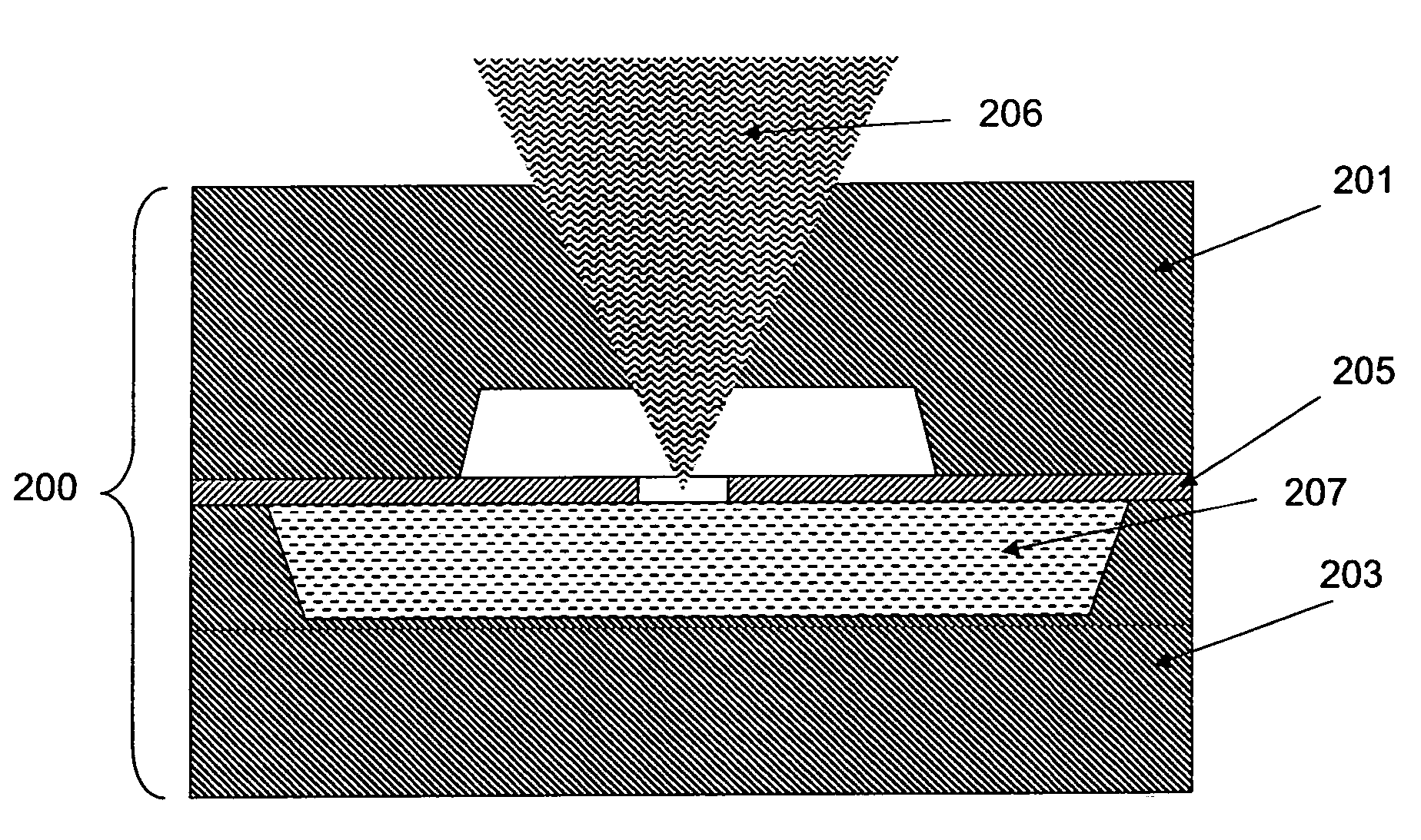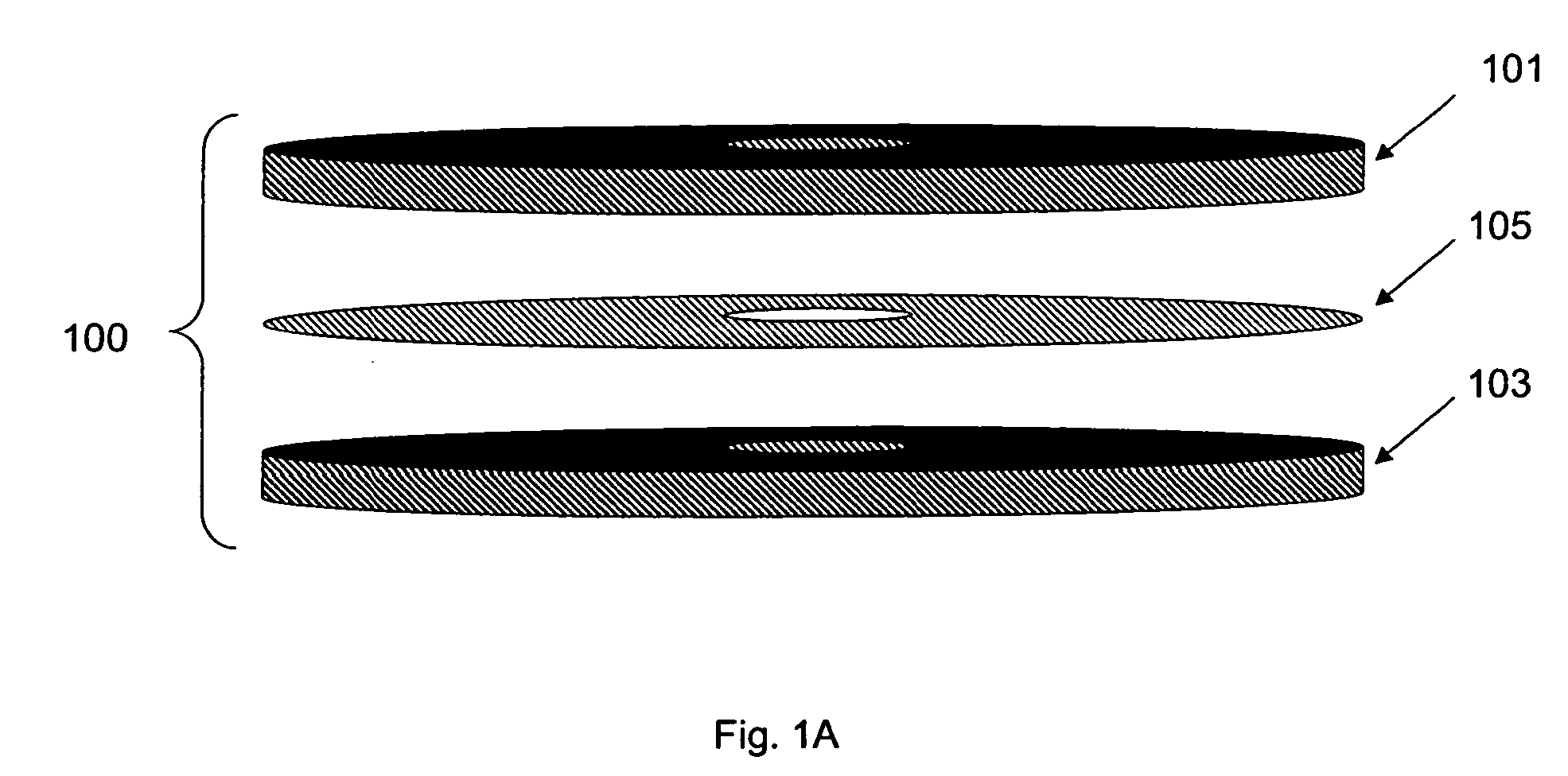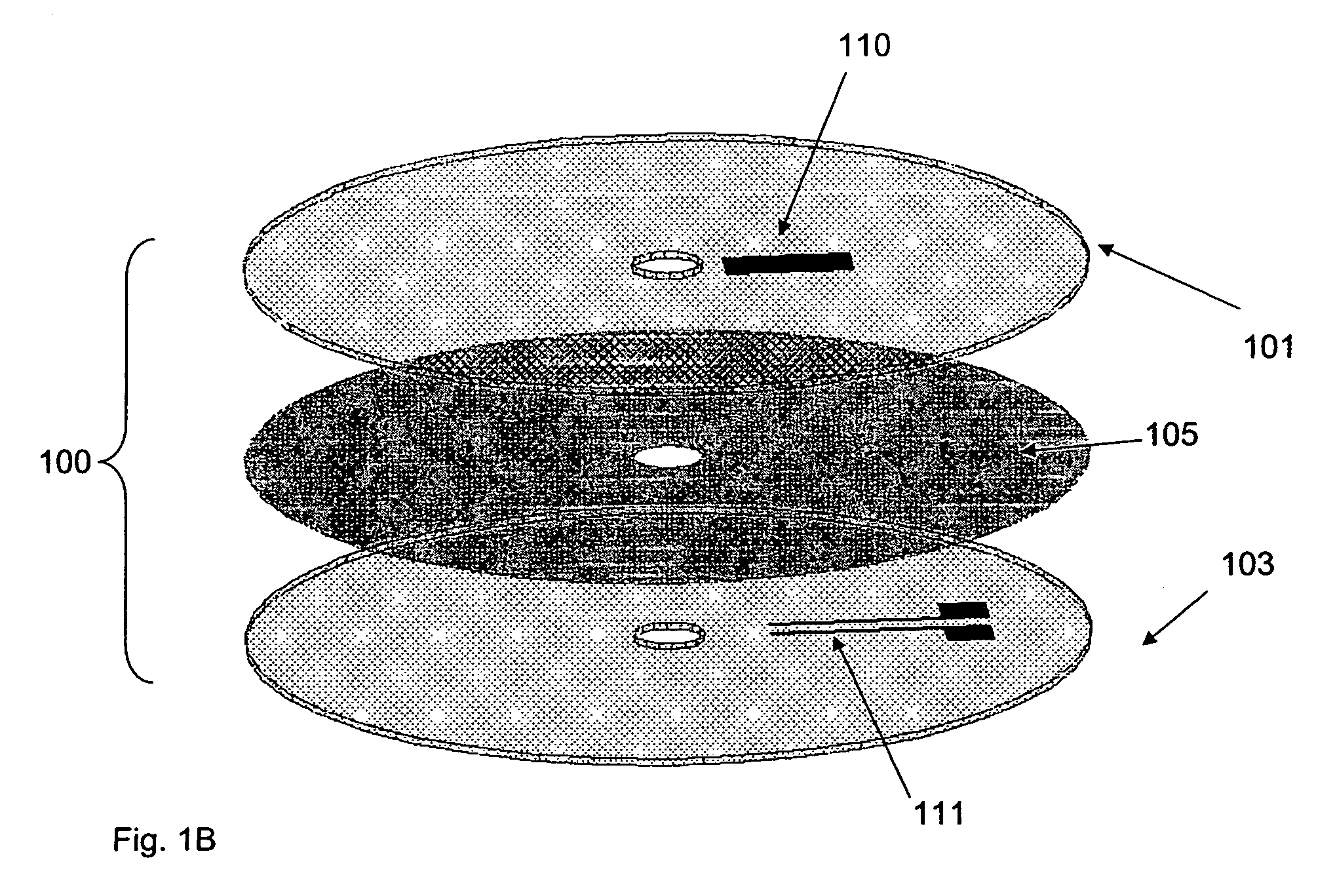Devices and methods for programmable microscale manipulation of fluids
a microscale and fluid technology, applied in the field of microfluidic circuits, can solve the problems of low reliability of prior art devices within the meso-scale range, high cost per valve, and high complexity of integration scale and complexity
- Summary
- Abstract
- Description
- Claims
- Application Information
AI Technical Summary
Benefits of technology
Problems solved by technology
Method used
Image
Examples
example 1
[0205]The optical feedback for focusing according to the present invention has been implemented to assess the correct positioning onto a material layer 701, as depicted in FIG. 7. Turning to FIG. 7, the optical feedback makes use of a simple glass 702 (about 0.199 mm thickness) that intercepts a few percent of the light reflected from the material layer 701 (through the same optical system used for the light incident onto the base). The light from the material layer 701 is imaged through a 48 mm focal length objective 705 onto a CCD 706. The CCD 706 records the actual shape of the laser spot onto the material layer 701, and can even image the material layer surface and—for example—beads floating in the fluid nearby the material layer.
[0206]It is contemplated within the scope of the invention that optical feedback can be achieved by the use of Astigmatic focusing. It is further contemplated within the scope of the invention that the laser junction image can be magnified or demagnifie...
example 2
[0212]Performance of the optical setup according to the invention can be characterized by the following example. The optical configuration is such, the energy of the beam after the CD lens and integrated all over its pupil amount to 16 μJ released in 10 μs, corresponding to 1.6W optical power. As expected, the original laser diode power of 6.2W was reduced because of collimation, matching and reflections in the optical setup.
[0213]When an 8 μm material layer of PMMA from Microchem loaded with Epolight 2057 was put on the CD lens focus, and a first shot was made, only approximately 7.6 μJ emerged from the base onto a pyrometer positioned behind the material layer. Neglecting reflections, which were expected to be about 4%, the remaining 8.4 microjoule were therefore deposited into the sample. As a reference, if the energy was uniformly deposited into a 1 microlitre water sample, its temperature would rise only approximately 0.0018 C. degrees. However, the energy was sufficient enough...
example 3
[0216]Performance of the laser according to the invention can be further understood with reference to the following example. The source of Laser emission used was the OSRAM SPL PL90—3 diode, having nanostack technology. The nanostack technology consists in the “vertical” or epitaxial integration of a number of discrete emitters on a semiconductor chip, and this produces a two to three times increase in maximum power. The specific diode exhibits an aperture of 20×10 microns, from three overlapping emitters that reach an optical output of approximately 75 W when limited to 100 ns pulse-lengths. The diodes were pulsed by means of a DEI PCX 7410 diode laser driver, from Directed Energy Inc. capable of covering the regime 20 ns to 1 μs at 10A, and 5A in CW mode. To access the regime above 10A, a DEI PCO 7120 hybrid OEM driver was employed. The pulse voltage and current was monitored by a Tektronix TDS2014 to reconstruct the electrical power onto the diode, and extrapolate its optical out...
PUM
| Property | Measurement | Unit |
|---|---|---|
| exposure time | aaaaa | aaaaa |
| thickness | aaaaa | aaaaa |
| thickness | aaaaa | aaaaa |
Abstract
Description
Claims
Application Information
 Login to View More
Login to View More - R&D
- Intellectual Property
- Life Sciences
- Materials
- Tech Scout
- Unparalleled Data Quality
- Higher Quality Content
- 60% Fewer Hallucinations
Browse by: Latest US Patents, China's latest patents, Technical Efficacy Thesaurus, Application Domain, Technology Topic, Popular Technical Reports.
© 2025 PatSnap. All rights reserved.Legal|Privacy policy|Modern Slavery Act Transparency Statement|Sitemap|About US| Contact US: help@patsnap.com



